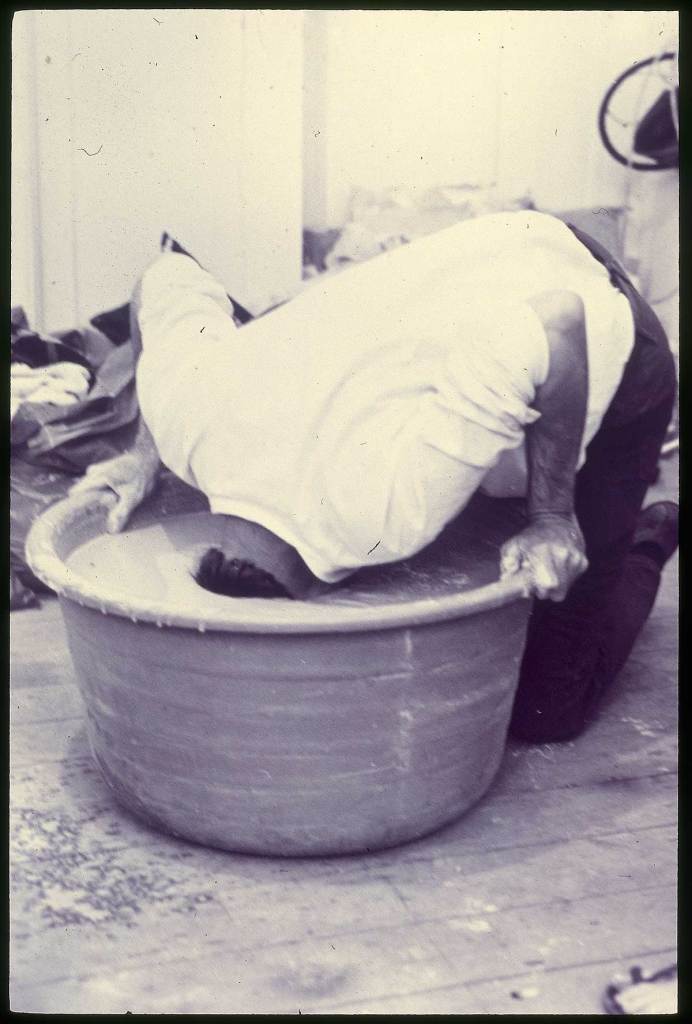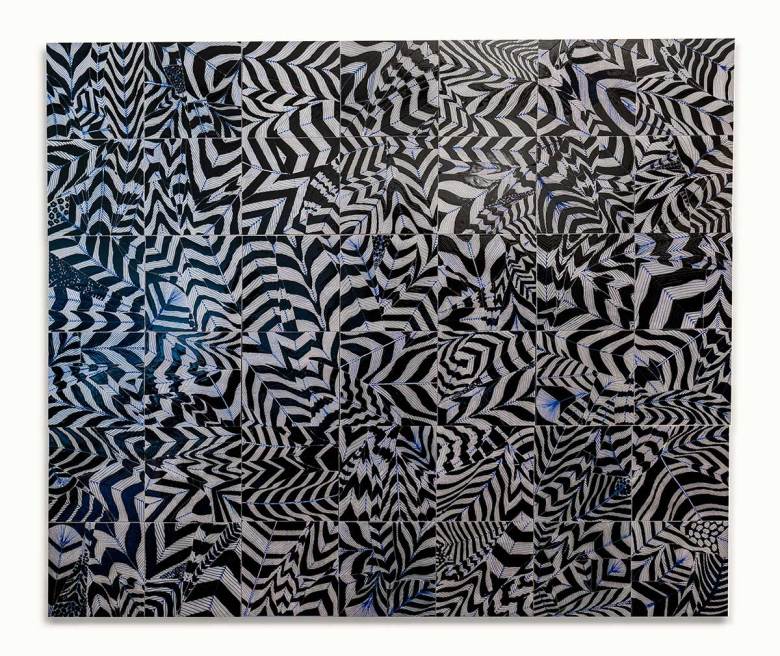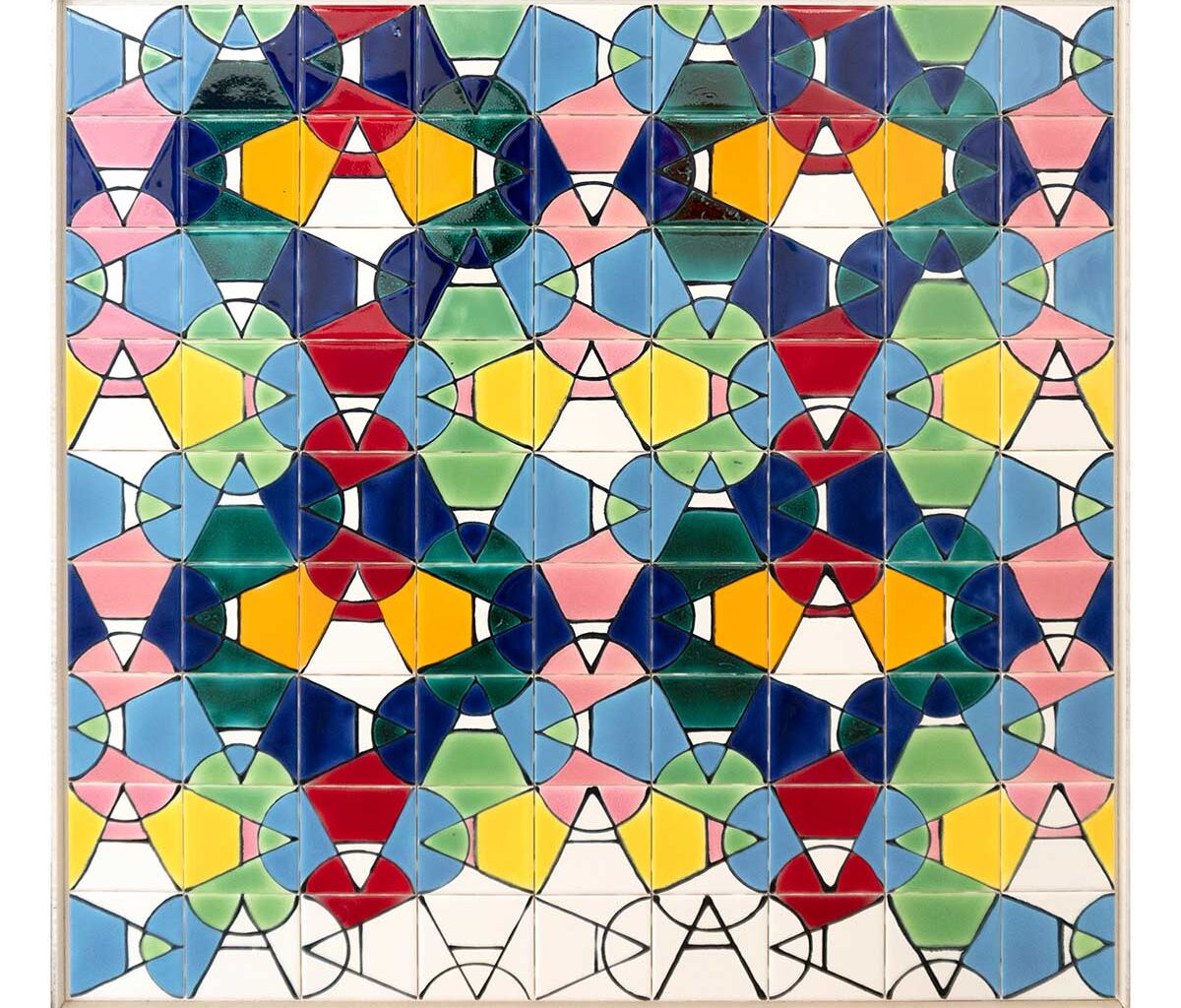Multimedia artist, ceramicist, and educator Jim Melchert will have his first retrospective exhibition at the di Rosa Center for Contemporary Art in San Francisco. Melchert was a huge presence in the Bay Area, and was often described as the “great philosopher of the postwar craft movement.” Jim Melchert: Where the Boundaries Are celebrates Melchert as a great American artist who challenged ceramic traditions of expression, form, and function while helping to elevate the medium’s acceptance into mainstream contemporary sculpture.
Collaboration and innovation in the ’60s and ’70s
Melchert earned a degree in art history from Princeton University in 1952 and taught English in Japan for four years. He then earned degrees in painting at the University of Chicago and afterward in ceramics under Peter Voulkos at the University of California, Berkeley. By that time, Melchert had inserted himself into the collaborative movements of the sixties, including the California Funk Movement. Located in the Bay Area, the Funk Artists, under the influence of beatnik culture and antiwar activism, developed a style that fused both painting and sculpture. Along with artists like Peter Voulkos, Bruce Conner , and Viola Frey, Melchert embraced performance art, absurdism, and found objects to invent playful multimedia art forms.
 Jim Melchert, Changes, 1972, performance in Amsterdam. Photograph by Mieke H. Hille, digitized 35mm film,18 minutes runtime
Jim Melchert, Changes, 1972, performance in Amsterdam. Photograph by Mieke H. Hille, digitized 35mm film,18 minutes runtime
During the seventies, Melchert taught at the San Francisco Art Institute and then at U.C. Berkeley. In 1972, he created the first iteration of Changes (1972), a near-legendary performance piece that is still discussed today. During Changes, Melchert and nine other participants immersed their heads in a basin of ceramic slip, which is the liquid form of clay. Afterward, they sat in a line on a bench as the slip dried, the clay transforming their bodies into vessels. Melchert later said:
It encases your head so that the sounds you hear are interior: your breathing, your heartbeat, your nervous system. It is surprising how vast we are inside. What I realized was, by sitting there with the other people with my ears and eyes blocked, I was experiencing my interior.
 Jim Melchert, Faces, 1972, Joan Brown and Raymond Saunders. Sequence of 162 slides of 162 artists each projecting half of the image. Photographed by Jim Melchert
Jim Melchert, Faces, 1972, Joan Brown and Raymond Saunders. Sequence of 162 slides of 162 artists each projecting half of the image. Photographed by Jim Melchert
That same year, Melchert created Faces with Joan Brown and Raymond Saunders. In another exploration of personal identity, they created a sequence of 162 slides of 162 artists’ faces, each projecting half of the image. Like the broken ceramics placed together in unexpected arrangements, a face was split on the left and connected to a different face on the right, creating new hybrid personages.
‘Earth Door’
The di Rosa is a natural fit to celebrate Melchert’s work and legacy. Founder Rene di Rosa was an early collector and longtime friend of Melchert. Among the works in the exhibition will be a large-scale photograph of Melchert’s seminal 1965 work, Earth Door, a land-art work commissioned by di Rosa. Earth Door, which is on view at di Rosa’s Napa property, was created when Melchert dug a mold into the land that echoed the pattern of plowed vineyards. He then poured concrete and eventually stood the U-shaped casting upright, painting two red triangles on its opposite side as a monument to the land and place.
Broken and fired porcelain series
As a ceramicist with a flair for originality, Melchert started making visual art with broken and fired porcelain tile with glaze. These are perhaps the most conventional in appearance of all his works, and at first resemble paintings until the viewer notices the porcelain cracks.
 Jim Melchert, Alternating Current #4, 1985, fired porcelain tile with glaze
Jim Melchert, Alternating Current #4, 1985, fired porcelain tile with glaze
An early example of this style is Alternating Current #1–4, 1985. Here, a becalmed composition of colors, a sunburst design organized like an abstract expressionist painting, is, upon closer examination, an arrangement of broken porcelain. Melchert’s process was to break the porcelain, draw on it, paint on it, and reassemble it into a new construction.
 Jim Melchert, Feathers of a Phoenix (Blue), 2003-4, broken and fired porcelain tile with glaze
Jim Melchert, Feathers of a Phoenix (Blue), 2003-4, broken and fired porcelain tile with glaze
Feathers of a Phoenix (Blue), 2003-4, is a dazzling example of this methodology. Ceramic tiles with feather patterns create an explosive dance of zig-zagging lines suggesting motion, also resembling a traditional painting or drawing.
Nothing is beyond repair
Curated by Griff Williams, founder of Gallery 16 and a close friend of Melchert’s, the exhibition will delve into his storied career through more than 60 works spanning six decades, some never before seen publicly.
“Melchert’s artwork was the embodiment of his kind and inquisitive spirit,” said Williams. “We see in his late tile work a metaphor for life. What lies behind these broken shards in Melchert’s mesmerizing works is something remarkable: Optimism. Nothing is beyond repair. These works are born from the belief that we have the power to bring positive change from our misfortune. By embracing the imperfect, he was celebrating our resilience, diversity, and human strength.”
The first-ever monograph on the artist, Jim Melchert: Where the Boundaries Are, written by Williams, will accompany the exhibition. The book is 256 pages of color illustrations with essays by artists and curatorial luminaries capturing the artist’s work in every stage of his career, illuminating his performance art and his celebrated ceramic works.
Jim Melchert: Where the Boundaries Are is on display at the di Rosa Center for Contemporary Art in San Francisco through Jan. 3, 2026.
Related

